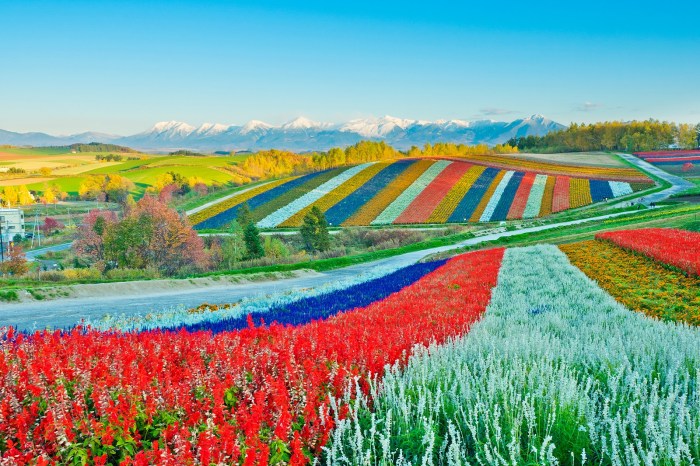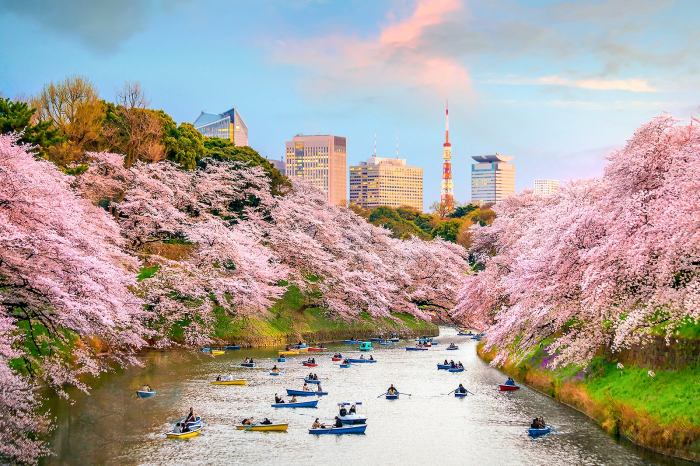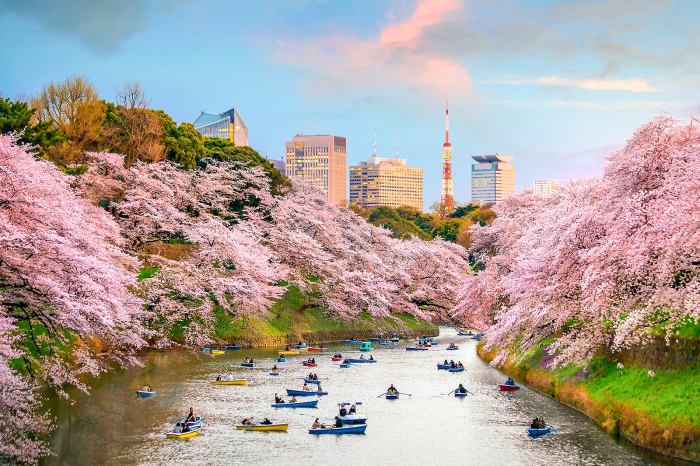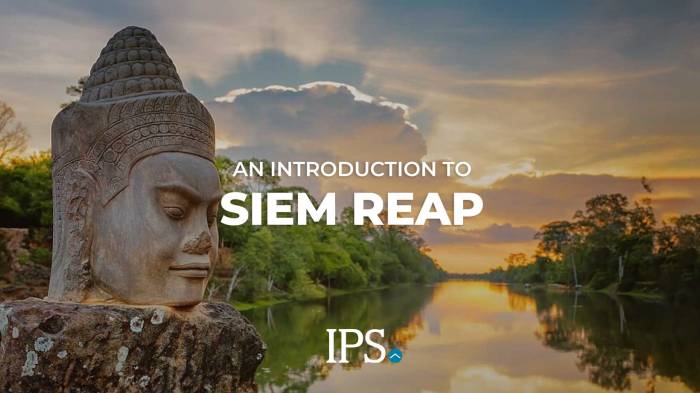Most beautiful places in Japan beckon travelers with a tapestry of stunning natural wonders, serene traditional gardens, and vibrant urban landscapes. From the iconic Mount Fuji to the breathtaking cherry blossoms in spring, this journey unveils the secrets of Japan’s captivating beauty, exploring the aesthetics that define this unique culture. We’ll delve into the traditional Japanese concepts of beauty, like wabi-sabi and mono no aware, to understand how they shape the design and architecture of the country.
This exploration will cover everything from iconic natural sites to the meticulously crafted traditional gardens. We’ll also touch on the beauty of modern architecture and vibrant cityscapes, highlighting the unique blend of old and new in Japanese culture. Finally, we’ll discuss the significance of seasonal beauty and festivals in celebrating the changing seasons and expressing the heart of Japan.
Introduction to Japanese Aesthetics
Japanese aesthetics are deeply rooted in the nation’s rich cultural heritage and profound connection with nature. These principles, often interwoven with philosophical concepts, shape the way Japanese people perceive and interact with the world, influencing everything from architecture and gardens to everyday objects. This intricate tapestry of beauty is not merely superficial; it’s a reflection of a worldview that values harmony, balance, and the ephemeral nature of existence.Japanese aesthetics prioritize the beauty in imperfection, the appreciation of transience, and the profound connection between humanity and the natural world.
This perspective is evident in the country’s renowned landscapes, meticulously crafted gardens, and architectural designs, all embodying a unique sense of beauty that transcends the purely visual.
Core Aesthetic Concepts
Japanese aesthetics are underpinned by several key concepts that are essential to understanding the nation’s artistic and design sensibilities. These concepts aren’t static; they evolve and intertwine, influencing each other in profound ways.
- Wabi-sabi: This concept emphasizes the beauty of imperfection, impermanence, and the natural beauty found in asymmetry and asymmetry. It’s about finding beauty in the natural processes of growth and decay. Wabi-sabi objects often have a quiet elegance, a sense of tranquility, and a deep connection to the present moment.
- Mono no aware: This concept explores the transient nature of beauty and the melancholic beauty inherent in the impermanence of things. It’s about appreciating the poignancy of change and the bittersweet beauty of experiences, acknowledging the inevitability of loss and the fleeting nature of moments.
- The Influence of Nature: Nature is a fundamental aspect of Japanese aesthetics. From the meticulously crafted rock gardens to the sprawling landscapes of national parks, nature’s presence permeates the cultural consciousness. The interplay between natural elements and human design is a constant theme.
Manifestations in Japanese Culture
The principles of Japanese aesthetics are not abstract ideals; they are tangible and deeply ingrained in the country’s cultural fabric.
- Architecture: Japanese architecture often prioritizes harmony with nature. Buildings are designed to blend seamlessly with their surroundings, emphasizing natural light and open spaces. The use of natural materials like wood and bamboo further connects the structure to the environment.
- Gardens: Japanese gardens are meticulously crafted miniature landscapes that embody the principles of wabi-sabi and mono no aware. The careful arrangement of rocks, water features, and plants creates a sense of tranquility and deep connection with nature. These spaces often incorporate natural elements like moss, stone, and water, demonstrating the importance of natural materials and the impermanence of nature’s beauty.
- Natural Landscapes: The natural landscapes of Japan are treasured for their beauty and serenity. From the serene beauty of cherry blossoms to the majestic beauty of mountains and forests, the nation’s landscapes embody a profound appreciation for nature.
Cultural Significance
Beauty in Japanese society is not solely aesthetic; it’s deeply intertwined with cultural values and beliefs. The appreciation of beauty reflects a respect for tradition, a reverence for nature, and a recognition of the ephemeral nature of existence. This emphasis on beauty is a fundamental element of Japanese culture.
| Aesthetic concept | Description | Example location |
|---|---|---|
| Wabi-sabi | Beauty found in imperfection, impermanence, and asymmetry. | Ryoan-ji Temple’s rock garden |
| Mono no aware | Appreciation for the transient nature of beauty and the poignancy of change. | A traditional tea ceremony |
| Influence of Nature | Nature is fundamental to Japanese aesthetics, often incorporated into architecture and gardens. | The Sagano Scenic Railway, traversing the Arashiyama Bamboo Grove |
Iconic Natural Wonders

Japan’s natural beauty is renowned worldwide, captivating visitors with its breathtaking landscapes and serene atmosphere. From towering mountains to pristine beaches, Japan offers a diverse range of natural wonders that showcase the country’s unique geological and ecological features. These locations hold deep historical and cultural significance, often serving as spiritual sanctuaries and inspiring artistic expression.Japan’s iconic natural sites are more than just picturesque vistas; they are integral parts of the nation’s cultural heritage.
These places reflect the deep respect and appreciation that the Japanese people have for nature, inspiring awe and wonder in all who experience them.
Japan boasts some truly stunning landscapes, from the serene temples of Kyoto to the vibrant streets of Tokyo. While exploring these incredible places, a taste of something different is always welcome. For a unique experience, I highly recommend checking out The Stewart Scotch Bar Easton Maryland, a fantastic spot to unwind and sample some fine whiskies. Their atmosphere perfectly complements the beauty of the Japanese culture and the rich history of the country, allowing you to fully immerse yourself in different worlds.
Returning to the captivating beauty of Japan, the country continues to be a source of inspiration and wonder.
Notable Mountain Ranges and Peaks
The Japanese archipelago boasts numerous mountain ranges, each with its own distinct charm. These towering peaks, often shrouded in mist or bathed in sunlight, have long been a source of inspiration for artists, poets, and spiritual seekers. The rugged beauty of these mountains underscores the resilience and strength of the Japanese spirit.
| Location | Description | Notable Features | Image Description |
|---|---|---|---|
| Mount Fuji | An iconic stratovolcano, often depicted in art and photography. | Symmetrical cone shape, snow-capped summit, symbolic of Japan. | A breathtaking view of Mount Fuji, its peak piercing the clouds, with a surrounding landscape of lush green forests and valleys. |
| Japanese Alps | A range of majestic peaks and valleys, including Mount Hotaka and Mount Norikura. | Diverse alpine flora and fauna, challenging hiking trails, stunning panoramic views. | A vista of the Japanese Alps, showcasing the jagged peaks against a backdrop of clear blue sky, with hints of snow on some summits and valleys in the foreground. |
| Hida Mountains | Known for their stunning scenery, rich history, and charming villages. | Dramatic landscapes, picturesque valleys, numerous hiking trails. | A picturesque valley in the Hida Mountains, surrounded by towering peaks, with a winding river flowing through the valley floor. |
Coastal Wonders
Japan’s coastline is a symphony of dramatic cliffs, serene bays, and picturesque beaches. The rugged beauty of the coastlines is a testament to the powerful forces of nature that have shaped the land over millennia. These coastal areas are also crucial for the nation’s fishing industry and maritime traditions.
| Location | Description | Notable Features | Image Description |
|---|---|---|---|
| Miyajima Island | Famous for its iconic floating torii gate. | The iconic floating torii gate, surrounding forest, views of the Seto Inland Sea. | A view of the iconic floating torii gate on Miyajima Island, with the gate standing majestically over the water, surrounded by lush green trees and a calm body of water. |
| Okinawa | A chain of islands with vibrant coral reefs, pristine beaches, and tropical forests. | Stunning beaches, vibrant coral reefs, diverse marine life. | A view of a pristine white sand beach in Okinawa, with clear turquoise water lapping against the shore, surrounded by lush green vegetation. |
| Shiretoko Peninsula | A rugged peninsula with pristine wilderness, untouched by human development. | Remote location, untouched nature, diverse wildlife (brown bears, sea otters). | A panoramic view of the Shiretoko Peninsula, showcasing dramatic cliffs, lush green forests, and the vast expanse of the ocean. |
Traditional Gardens and Temples
Traditional Japanese gardens and temples are more than just places of beauty; they are expressions of profound cultural values and aesthetic principles. These spaces meticulously crafted over centuries showcase the deep respect for nature and the pursuit of harmony between humanity and the environment. The meticulous design elements found in these places offer a profound connection to the past and a meditative escape from the everyday.The design of these gardens is steeped in symbolism, with every element – a carefully placed rock, a meticulously pruned bush, a flowing stream – conveying a specific message or emotion.
This deep-seated symbolic language is central to the experience, allowing visitors to connect with a deeper understanding of Japanese aesthetics and philosophy.
Examples of Traditional Japanese Gardens
Traditional Japanese gardens are not merely decorative; they are designed to evoke a sense of serenity and contemplation. The concept of “wabi-sabi,” which embraces the beauty of imperfection and impermanence, is a cornerstone of their design. These gardens encourage mindful observation and a connection with the natural world.
Rock Gardens (Kare-sansui)
Rock gardens, known as kare-sansui, are minimalist landscapes that focus on the interplay of rocks and carefully raked gravel. These gardens represent the essence of natural beauty distilled into a miniature world. The placement of rocks, symbolic of mountains, islands, and even the vastness of the sea, is crucial in creating a sense of depth and mystery. The meticulous raking of the gravel, evoking the fluidity of water, further enhances the meditative atmosphere.
The beauty of these gardens lies in their subtle artistry, their ability to suggest, rather than explicitly portray, the landscape. A famous example is the Ryoan-ji Temple rock garden in Kyoto, with its enigmatic arrangement of rocks, a quintessential example of this style.
Zen Gardens
Zen gardens, often found within Zen Buddhist temples, are a specific type of rock garden. They are characterized by the use of sand, raked into patterns to represent water and landscapes. These gardens are designed for meditation, encouraging contemplation and a connection with the inner self. The emphasis is on simplicity, tranquility, and the appreciation of impermanence.
The use of raked sand patterns symbolizes the ever-changing nature of life. The quiet solitude of a Zen garden provides a space for introspection and mindfulness.
Strolling Gardens (Karesansui)
Strolling gardens, or Karesansui, are more expansive and incorporate elements of nature such as ponds, streams, and trees. These gardens are designed for leisurely exploration, offering a variety of perspectives and experiences. The pathways are thoughtfully laid out to encourage contemplation and discovery, allowing visitors to appreciate the garden’s beauty from multiple angles. The flowing water, the lush greenery, and the thoughtfully placed rocks all contribute to a sense of tranquility and harmony.
These gardens provide a sense of openness and interconnectedness with nature.
The Role of Temples and Shrines
Temples and shrines in Japan are not merely places of worship; they are integral parts of the landscape, carefully integrated with surrounding gardens and natural elements. The gardens surrounding these sacred sites often embody the same principles of minimalism and serenity, creating a harmonious blend of spiritual and natural beauty. The carefully cultivated spaces surrounding these structures offer a serene environment for contemplation and reflection, enhancing the spiritual experience.
Japan boasts some breathtaking landscapes, from the serene temples of Kyoto to the majestic Mount Fuji. But if you’re looking for a vibrant, immersive experience, check out the incredible Chinese Lantern Festival in North Carolina. This festival offers a unique spectacle of colorful lanterns and captivating performances, offering a taste of Asian culture right here in the US.
Even though the festival is a great experience, Japan still has a special charm for its exquisite natural beauty.
The interplay of architecture and nature is a hallmark of Japanese temple and shrine design.
Comparison of Garden Styles
| Garden Type | Key Features | Design Principles | Image Description |
|---|---|---|---|
| Rock Garden (Kare-sansui) | Small, minimalist space; rocks, raked gravel. | Symbolism of mountains, water; emphasis on suggestion, not explicit representation; tranquility, contemplation. | A tranquil scene with carefully placed rocks, arranged to evoke a sense of depth and mystery, set against a background of raked, meticulously-patterned gravel, suggesting flowing water. |
| Zen Garden | Sand, raked patterns, minimalist design; often within Zen temples. | Representations of water, landscapes; emphasis on simplicity, tranquility, impermanence; meditation. | A close-up view of a Zen garden, with carefully raked sand patterns creating intricate designs that represent water, islands, and mountains. The overall impression is one of serene minimalism and meditative calm. |
| Strolling Garden | Larger scale; ponds, streams, trees; pathways for leisurely exploration. | Harmony with nature; multiple perspectives; appreciation of natural beauty; contemplation. | A panoramic view of a strolling garden, with winding paths leading through lush greenery, flowing streams, and carefully placed rocks. The image showcases the integration of architecture, water, and vegetation, creating a serene and expansive space for contemplation. |
Urban Landscapes and Modern Architecture
Japan’s urban spaces are a captivating blend of tradition and innovation. From the bustling energy of Tokyo to the serene beauty of Kyoto’s modern additions, the country’s cities showcase a remarkable ability to integrate ancient aesthetics with contemporary design. This fusion is evident in the architectural marvels that grace urban landscapes, seamlessly weaving into the fabric of the cityscapes.The design elements employed in these urban areas often draw inspiration from both Japanese cultural heritage and international trends.
These designs reflect a commitment to functionality, sustainability, and a deep appreciation for the surrounding environment. The result is a unique urban experience that is both vibrant and harmonious.
Architectural Styles in Contemporary Japanese Buildings
Contemporary Japanese architecture embraces a diverse range of styles. From minimalist designs that emphasize clean lines and natural materials to more elaborate structures incorporating futuristic elements, the range is wide. This diversity reflects the country’s openness to international influences while maintaining its unique aesthetic identity. Key architectural styles include a strong presence of modernism, characterized by its emphasis on simple forms and functional design.
Biomimicry and sustainable design principles are also frequently integrated, with buildings often incorporating natural elements and environmentally conscious practices.
Japan boasts stunning landscapes, from the serene temples of Kyoto to the vibrant energy of Tokyo. Planning a trip there? Before you pack your bags, checking out the best Amazon carry-on travel essentials and the new Delta checked bag policy is crucial. This helpful guide will help you stay organized and on budget, ensuring you’re prepared for your incredible Japanese adventure.
Ultimately, focusing on the right gear makes exploring these amazing destinations even more enjoyable.
Innovative Designs in Contemporary Japanese Buildings
Innovative designs often integrate traditional Japanese design principles with modern technology and materials. Many contemporary buildings utilize advanced materials and construction techniques to create striking structures that are both aesthetically pleasing and functional. For example, the use of glass and steel in high-rise buildings offers stunning views and maximizes natural light, while still respecting the surroundings. These innovative approaches reflect a commitment to pushing boundaries in architecture, demonstrating Japan’s technological prowess and design sensibility.
Sustainability and environmental consciousness are major drivers in the design process. Many buildings feature green roofs, energy-efficient systems, and natural ventilation strategies to minimize environmental impact.
Blending Modern Aesthetics with Traditional Japanese Design Principles
Contemporary Japanese architecture frequently incorporates traditional design principles within modern structures. The use of natural materials like wood and bamboo, often in a minimalist approach, is common. The concept of “wabi-sabi,” appreciating the beauty of imperfection and impermanence, is sometimes incorporated into the design. This delicate balance between tradition and modernity is a defining feature of contemporary Japanese architecture.
This harmony allows the buildings to integrate seamlessly into the urban landscape, maintaining a sense of tranquility and aesthetic appeal. The careful consideration of light, space, and the relationship between the building and its surroundings is also a hallmark of this blending.
Table: Examples of Urban Landscapes and Modern Architecture
| City/Area | Architectural Style | Key Design Features | Image Description |
|---|---|---|---|
| Tokyo, Shibuya | Modernism, Minimalism | High-rise buildings with clean lines, large windows maximizing natural light, use of glass and steel, integration of greenery | A vibrant cityscape of towering modern structures, reflecting the energy and dynamism of Shibuya. The buildings appear sleek and efficient, with an emphasis on open spaces and natural light. The use of glass allows for panoramic views of the city. |
| Kyoto, Gion | Contemporary Modern with traditional elements | Modern additions to the historic Gion district blend seamlessly with the traditional wooden houses. Use of natural materials like wood and bamboo in a modern aesthetic. Carefully planned spaces to maintain the tranquility of the surrounding area. | A blend of traditional wooden houses and modern buildings. Modern additions incorporate elements of traditional architecture, such as the use of wooden beams and roofs, while incorporating modern amenities and design features. |
| Osaka, Umeda Sky Building | Post-modernism, High-rise | Iconic landmark with a futuristic design incorporating both practicality and aesthetics. The building features a complex structural design, using glass and steel to maximize visibility. | A towering, futuristic building with a complex structure, emphasizing visibility and transparency. The sky-high location allows for stunning views of the surrounding city. |
| Nagoya, Aichi Prefectural Government Building | Modern, Sustainable | Innovative design incorporating sustainable features such as natural ventilation and solar panels. The building blends modern design with environmentally conscious practices. | A contemporary structure that seamlessly integrates sustainable design elements. The building is likely to feature a green roof, efficient energy systems, and ample natural light. |
Seasonal Beauty and Festivals
Japan’s breathtaking landscapes are not static; they transform with the seasons, painting a vibrant tapestry of beauty. From the delicate pink of cherry blossoms in spring to the fiery hues of autumn leaves, each season offers a unique opportunity to experience the country’s natural artistry. This seasonal rhythm is further enriched by a rich tapestry of festivals, which celebrate these transitions and showcase the cultural heart of Japan.The beauty of Japan is not solely found in its stunning scenery but also in the traditions and festivals that celebrate those seasons.
These events, often steeped in history and folklore, offer a glimpse into the Japanese spirit and their deep connection with nature. They are a powerful expression of Japanese aesthetics, combining artistry, performance, and community.
Seasonal Influences on Locations, Most beautiful places in japan
The changing seasons profoundly impact the beauty of various locations across Japan. Spring’s gentle warmth brings forth the iconic cherry blossoms, while summer’s vibrant greenery fills the forests and mountains. Autumn’s fiery colors paint the landscape in spectacular displays, and winter’s snowfall transforms landscapes into serene, almost magical, scenes. These shifts influence not only the visual appeal but also the activities and experiences available to visitors.
Unique Beauty of Each Season
Spring, with its delicate cherry blossoms, evokes a sense of renewal and beauty. The ephemeral nature of the blooms, often just a few days of full bloom, adds to their allure. Summers, with their lush greenery and vibrant foliage, offer a refreshing escape from the heat. Autumn presents a breathtaking panorama of fiery reds, oranges, and golds as the leaves transform.
Winter’s crisp air and pristine snowfall create a tranquil and serene atmosphere. Each season offers a distinct and unforgettable experience.
Cultural Significance of Festivals
Japanese festivals, or Matsuri, are not simply celebrations; they are deeply rooted in tradition and often linked to local history, mythology, or religious beliefs. They are opportunities for community bonding, showcasing a blend of artistry, performance, and communal spirit. Festivals are not just about entertainment; they offer a profound understanding of Japanese culture and its values.
Unique Elements of Specific Festivals and Visual Appeal
Many festivals are distinctive in their celebrations. Some feature elaborate floats, or mikoshi, carried through the streets. Others incorporate vibrant costumes, music, and dance. The intricate details of the costumes, the vibrant colors, and the rhythmic energy of the processions create a captivating visual spectacle. The lighting, often elaborate and carefully planned, enhances the overall aesthetic appeal.
Examples of Seasonal Beauty and Festivals
| Season | Location | Visual Description |
|---|---|---|
| Spring | Kyoto | Thousands of cherry trees in full bloom, lining the streets and temples, creating a sea of pink. The delicate petals falling gently to the ground enhance the overall beauty. |
| Summer | Shikoku | Lush green foliage in the mountains, waterfalls cascading down rocky slopes, and the vibrant colors of various flowers filling the landscape. The humid air and dense greenery create a calming, refreshing atmosphere. |
| Autumn | Hokkaido | Dense forests ablaze with fiery reds, oranges, and golds. The crisp air, coupled with the vibrant colors, creates a stunning contrast against the snow-capped mountains. |
| Winter | Hakone | The snow-covered volcanic hot springs, with the steaming clouds rising above the white landscape. The pristine snow, reflecting the surrounding lights, creates a magical atmosphere. |
Food and Cuisine: Most Beautiful Places In Japan
Food in Japan isn’t just sustenance; it’s an art form deeply interwoven with the country’s aesthetic sensibilities. From the meticulous presentation of a single dish to the seasonal ingredients celebrated in regional cuisines, food embodies a profound respect for nature and tradition. The careful consideration given to every aspect of the culinary experience – from the ingredients to the preparation and presentation – contributes significantly to the overall aesthetic experience of Japan.Japanese cuisine prioritizes simplicity, balance, and the inherent beauty of the ingredients.
This philosophy, often referred to aswashoku*, emphasizes fresh, seasonal produce and natural flavors, highlighting the artistry of preparing and presenting food. This focus on natural beauty and skillful preparation enhances the dining experience beyond mere sustenance, creating a holistic aesthetic experience.
The Role of Food in Japanese Culture
Japanese food culture is deeply rooted in the country’s agricultural traditions and respect for nature. The availability and variety of ingredients are highly influenced by the seasons, creating a dynamic relationship between the land and the table. This connection with the natural world is reflected in the use of fresh, seasonal ingredients, and in the respect given to the process of growing and harvesting them.
Food Presentation and Preparation
The aesthetic of Japanese food extends beyond the ingredients themselves. The presentation of a dish is as important as its taste. Techniques likemise en place*, the meticulous arrangement of ingredients before cooking, are central to the culinary art. Furthermore, the meticulous preparation methods, often involving intricate knife skills and precise movements, contribute to the visual appeal and the overall experience.
This dedication to visual harmony and the meticulous nature of preparation are crucial to the aesthetic appreciation of the meal.
Regional Cuisines and Their Visual Beauty
Regional variations in Japanese cuisine reflect the unique landscapes and cultures of different parts of the country. The availability of specific ingredients and traditional cooking methods are influenced by local geography, historical events, and cultural norms. These variations showcase the beauty of regional diversity and the creative use of local resources.
The Uniqueness of Japanese Food Culture
Japanese food culture distinguishes itself through its emphasis on harmony, balance, and respect for tradition. The delicate balance of flavors, textures, and colors in a dish is a testament to the meticulous approach to culinary artistry. The mindful approach to food, from sourcing ingredients to preparing and presenting dishes, is deeply embedded in Japanese culture. The use of seasonal ingredients and meticulous attention to detail are distinctive characteristics of Japanese cuisine.
Regional Cuisines in Japan
| Region | Cuisine Style | Visual Description |
|---|---|---|
| Hokkaido | Seafood-centric cuisine, incorporating local produce | Fresh seafood, often grilled or steamed, with seasonal vegetables. Dishes often showcase the vibrancy of the local bounty. |
| Kanazawa | Known for its refined kaiseki cuisine | Beautifully arranged multi-course meals featuring seasonal ingredients. The visual artistry is often as striking as the flavors. |
| Kyoto | Traditional Kaiseki cuisine, highlighting seasonal ingredients | Sophisticated and elegant, with exquisite presentation of a variety of dishes. |
| Okinawa | A unique blend of Japanese and Ryukyuan culinary traditions. | Utilizes fresh tropical fruits, vegetables, and seafood. Presentation often highlights the vibrant colors and textures of the ingredients. |
Accessibility and Practical Information
Japan’s breathtaking beauty is best experienced with careful planning. Understanding the practical aspects of travel, from transportation to local customs, ensures a smooth and enriching journey. This section provides essential information for navigating Japan’s diverse landscapes and cultural experiences.Planning a trip to Japan requires careful consideration of the best time to visit, transportation options, and accommodation choices. Different regions have varying transportation infrastructure, and understanding these nuances will enhance your trip’s enjoyment.
Respecting local customs and traditions is crucial for a positive and culturally sensitive experience.
Transportation Options
Japan boasts an extensive and efficient transportation network. High-speed Shinkansen (bullet trains) are a popular and convenient way to travel between major cities. Local trains and buses are readily available for shorter distances. Consider purchasing a Japan Rail Pass if you plan to travel extensively by train. Air travel is also a viable option for reaching more remote destinations.
Understanding train schedules and ticket purchasing methods is essential for minimizing travel time and stress.
Accommodation Choices
A wide array of accommodations cater to different budgets and preferences. From traditional Ryokans to modern hotels and hostels, you can find options that match your needs. Book accommodations in advance, especially during peak seasons. Consider the location of your accommodation in relation to the attractions you plan to visit. This will help you save time and money on transportation.
Local Customs and Etiquette
Japanese culture emphasizes politeness and respect. Learning basic Japanese phrases, like “arigato” (thank you) and “sumimasen” (excuse me), can go a long way in showing respect. Be mindful of social etiquette, such as removing your shoes before entering homes and temples. Observe local customs during meals, such as using chopsticks correctly and not leaving food on your plate.
Showing respect for local customs ensures a positive interaction with the local population.
Planning Your Trip
Planning a trip that maximizes your enjoyment of Japan’s beauty requires meticulous preparation. Research the locations you wish to visit and consider the best time to travel based on the season and events. Book accommodations and transportation in advance, especially during peak seasons. Learn basic Japanese phrases to enhance communication and interaction with locals. Be aware of local customs and etiquette to ensure a positive experience.
Consider purchasing a Japan Rail Pass if you plan on extensive train travel.
Sample Trip Planning Table
| Location | Accessibility | Essential Information |
|---|---|---|
| Kyoto | Well-connected by Shinkansen, local trains, and buses. Numerous hotels and Ryokans. | Kyoto is a UNESCO World Heritage site with numerous temples, gardens, and cultural attractions. Consider visiting during autumn for stunning foliage. |
| Hakone | Easily accessible by train from Tokyo. Offers various onsen (hot spring) resorts. | Hakone is famous for its stunning views of Mount Fuji and hot springs. Consider a day trip or a multi-day stay. |
| Hiroshima | Well-connected by Shinkansen and domestic flights. Numerous hotels and hostels. | Hiroshima Peace Memorial Park is a poignant reminder of history. Consider a visit to Miyajima Island for its iconic torii gate. |
Final Wrap-Up

This journey through Japan’s most beautiful places has shown the depth and breadth of its aesthetic beauty. From the serene tranquility of traditional gardens to the vibrant energy of bustling cities, Japan’s unique blend of nature, culture, and design makes it a destination unlike any other. This exploration offers insights into the country’s rich history and artistic traditions, promising a profound and unforgettable experience for any traveler.
Whether you seek tranquility or excitement, Japan promises a journey of visual delight and cultural immersion.










